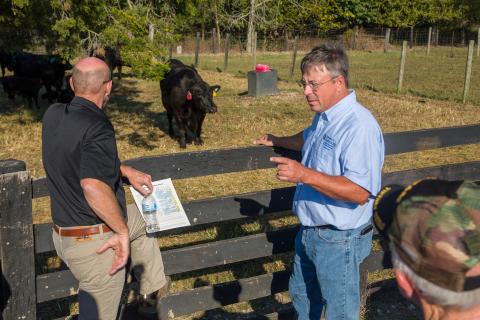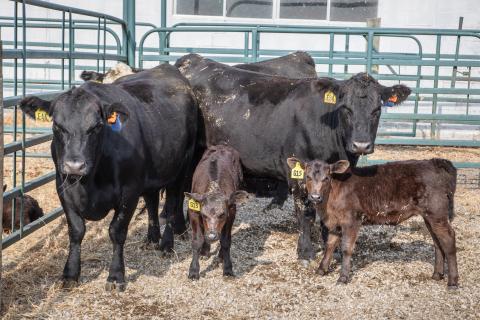Health

Recognizing and Managing Common Health Problems of Beef Cattle
Early detection of health problems can minimize/prevent health issues from escalating through a herd. This article identifies many common problems found in beef cattle as well as the probable causes of those conditions and suggested measures to prevent recurrence.
A Planning Calendar for Beef Cattle Herd Health

Developing a sound and practical commercial beef cow-calf herd health program requires keeping your production objectives in mind. Producers need to work with a veterinarian who has expertise and interest in disease development, physiology and biology. In partnership with the veterinarian the focus should be on optimizing herd health and animal well-being, efficient production, and maximizing net returns.
Several constraints must be considered for a health program is developed and used.
- The calving interval must be 12 months.
- Calves should normally be weaned at five to nine months.
- A definite breeding period must occur (90 days or preferably less).
- Pregnancy checking should be performed after appropriate interval following A.I. or removal of breeding bulls.
- Nutrition must be monitored and maintained to meet specific requirements at specific times of the year.
- Records must be kept containing breeding, calving, weaning and vaccination and parasite control procedures. Individual cow records and disease incidence records are also important.
- Beef quality assurance is of particular importance and the producer must be a part of the veterinarian-client-patient relationship to ensure violative drug residues and damaging injection site lesions do not occur.
- The veterinarian must be able to regularly evaluate the program and assess its impact upon the overall production and income of the cattle unit.
Medicated Feed and the Veterinary Feed Directive
There are instances when adding medication to cattle feed is necessary (prevention or treatment of disease) or desired (improved growth and feed efficiency). There is also concern that using medically important antibiotics (those used in human medicine) in livestock feed can contribute to antimicrobial resistance and reduce effectiveness of these antibiotics when used to treat human disease.
| The provided lists of vaccines and dewormers is for example purposes only and should not be considered an endorsement of products by the University of Kentucky. |
|---|
Examples of Vaccines and Dewormers for Cows, Replacement Heifers & Bulls
Examples of Vaccines and Dewormers for Nursing Calves and Weaned/Feeders
Vaccinations for the Cow-Calf Operation
Forage Livestock Disorders
Common forage-related livestock health disorders may arise when grazing forages due to weather or other factors.
Additional Health Information
ID-108 The Kentucky Beef Book, 2021
- Chapter 7: Health and Management Techniques
ID-135 Pinkeye--Infectious Bovine Keratoconjunctivitis
Electronic file created in 2012
